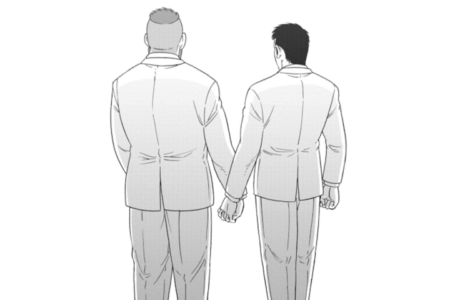Changing the world by changing where you are in Love Me for Who I Am volume 3
Kata Konayama’s manga series Love Me for Who I Am was always going to go to some challenging places given that its subject matter revolves primarily around gender identity and sexuality. After a relatively gentle start in the first volume, the second started to demonstrate that, despite the core of the main cast being incredibly supportive to one another as they all come to terms with their own particular identities, acceptance is by no means a universally accepted thing.
Core to the exploration of this theme in Love Me for Who I Am is the character Kotone, who was introduced to us as a longstanding friend of our non-binary protagonist Mogumo. Prior to Mogumo’s induction at the otokonoko café Question and their commencing a relationship with their classmate and coworker Tetsu, it’s strongly implied that Mogumo’s only real friend was Kotone. Kotone most certainly supported Mogumo as they started to understand their true identity, but as it transpires, there was a definite element of codependence going on, too.
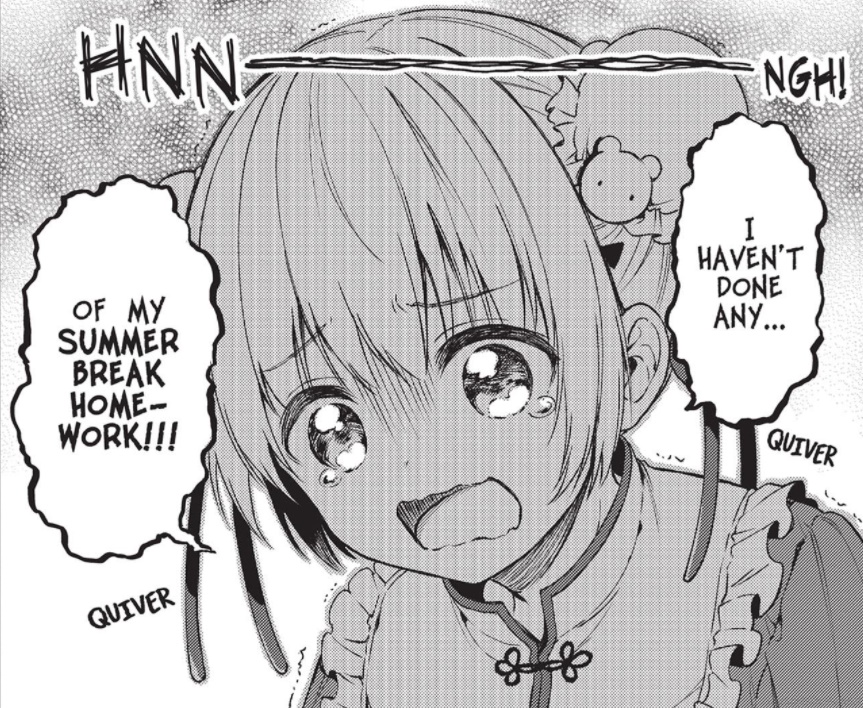
Kotone is gay, and has, on some level, understood this for a very long time, even before Love Me for Who I Am’s story begins. But, for a number of different reasons, she has felt unable to admit this to herself, to Mogumo and to society in general. Not only that, but the sight of Mogumo making their own progress and seemingly moving on with their life has hurt Kotone deeply; it seems that despite typically acting in a somewhat motherly or “older sister” type role towards Mogumo, Kotone needed Mogumo more than the other way around.
Kotone found Mogumo’s transition to independence particularly difficult because she had seen Mogumo’s non-binary nature as a non-threatening means of exploring her own feelings. While accepting of Mogumo on the surface, Kotone had clearly been looking at Mogumo as something of a more “acceptable” means of figuring out how she felt about same-sex relationships.
While Mogumo has habitually presented in a feminine manner right from the outset of Love Me for Who I Am, it’s clear that Kotone clearly thought of them as still being a boy in some way. To her, the idea of being romantically or sexually interested in a boy who dressed as a girl was somehow more acceptable than the idea of an actual lesbian relationship.
She doesn’t admit this outright, but her behaviour makes it particularly obvious — especially towards the conclusion of Love Me for Who I Am’s second volume, in which she feels intense discomfort at noticing the more masculine elements of Mogumo’s body, such as their hands.
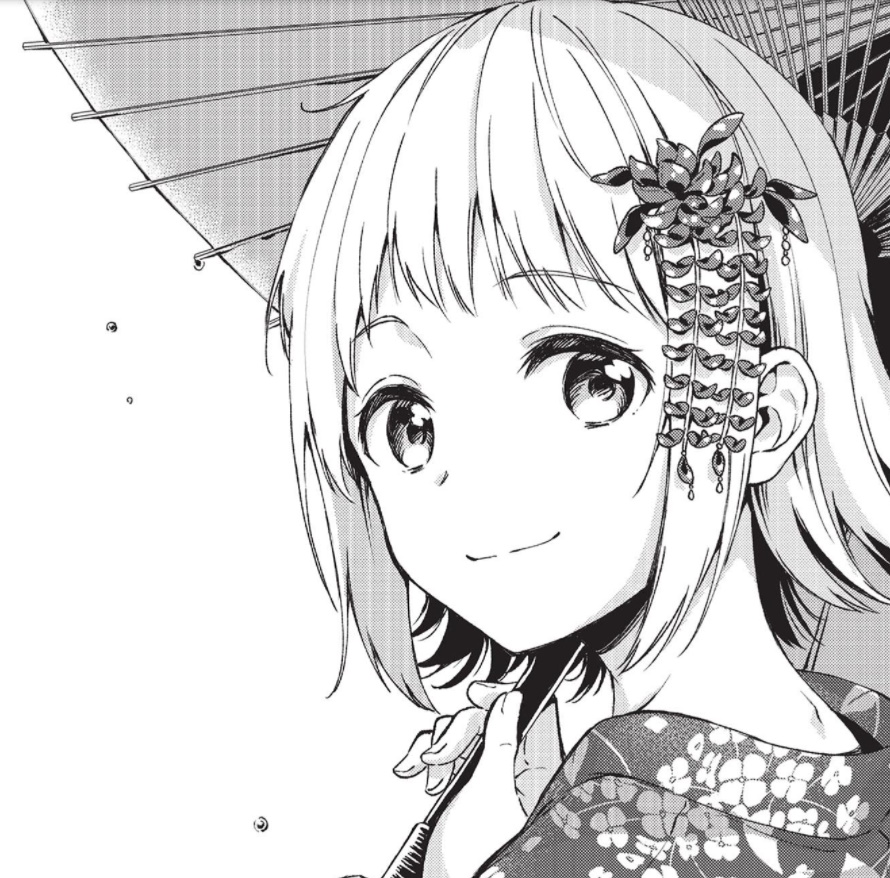
A significant part of volume 3 of Love Me for Who I Am, then, concerns Kotone and how she might be able to approach her own identity crisis. Mogumo, being a lot sharper than their occasionally somewhat dopey appearance might suggest, knows exactly what’s going on with Kotone, and wants to help her. And, specifically, Mogumo wants to help Kotone in a way that will allow her to become more independent rather than relying on Mogumo to do all the hard work for her.
Core to Kotone’s problem is the question of acceptance. She has difficulty accepting Mogumo for who they truly are, she has difficulty accepting her own identity as a lesbian, and, up until partway through the second volume, she had difficulty accepting the identities of the other cast members working at Question. It’s a complicated situation, remember, since Question plays host to a spectrum of characters including an unashamed boy who simply enjoys cosplaying as girls, a gay boy who dresses as a girl as a means of protecting his boyfriend from the judgement of society, a trans girl who is just starting to realise she’s trans, and another trans woman who is thoroughly confident and comfortable in her identity.
As Mogumo has been getting more comfortable in talking about their situation with the others at Question — and, likewise, they have been more comfortable talking about their own — the subject of attending the local equivalent of a Pride parade comes up. Mogumo believes that this would be an ideal opportunity for Kotone to see that she’s not alone in the way she feels, and thus manages to convince her to come along.
The results are, to say the least, somewhat mixed. Kotone is impressed by, as she puts it, “what she’s always wanted being within arm’s reach”, but is also terrified.
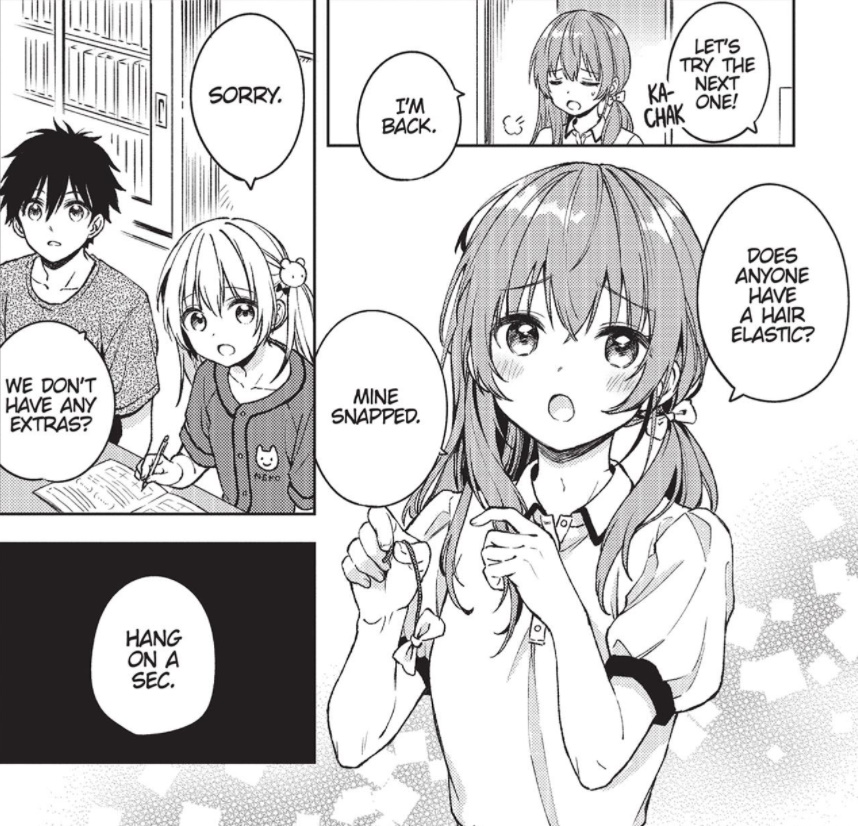
“I’ve always pretended to be normal,” she says to herself, reflecting on the situation. And her choice of words is deliberate, here; while she is finding it harder and harder to avoid the fact that she is simply incapable of feeling attraction to anyone other than another girl, she still believes this to be “not normal”. She believes it sets her apart and isolates her, and that if she were ever to admit how “not normal” she is, she would be ostracised.
Kotone breaks down in tears at the festival, and Mogumo goes to take her home, hoping that the pair of them having some time completely alone together might encourage Kotone to actually speak up to the person who is supposedly her closest friend.
“There’s nothing on my mind,” says Kotone, stubbornly, refusing to let her feelings out.
“Then stop using me as a substitute for a girlfriend,” says Mogumo, clearly tired of the situation but still wanting to support her. “You can’t be anyone but yourself. And I can’t be anyone else either. I’m not a girl. And I can’t be with you forever in the way that you want.”
Tough love, yes, but a much-needed wake-up call for Kotone, who has been mired in her own dependence on Mogumo up until this point. Devastated at Mogumo’s pronouncement and the prospect of being left alone, Kotone explodes with emotion and begs Mogumo not to leave them.
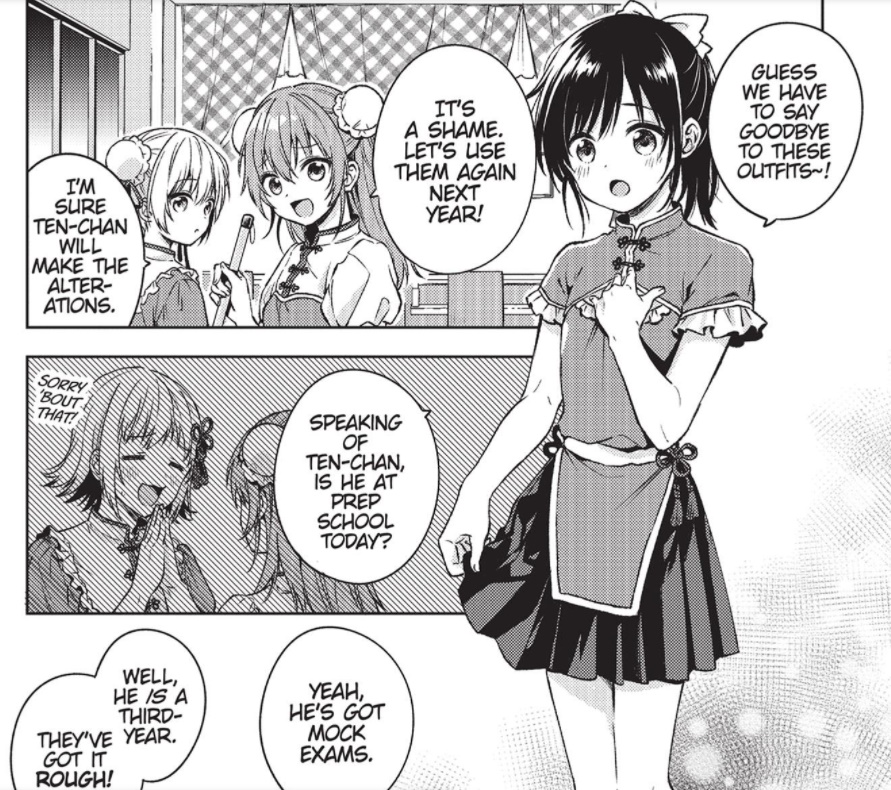
“We’re two different people,” says Mogumo. “But that doesn’t mean you’re alone. I know it’s scary acknowledging that you’re different. But you accepted me, right, Koto-chan? And that means you can accept yourself, too, doesn’t it?”
It’s a powerful moment, and a real turning point for both Kotone and Mogumo. In many respects, the pair of them have switched positions; while once Mogumo was the one being taken care of by Kotone as they wallowed in self-pity and the assumption that no-one would ever understand them, now Mogumo is the one who is mostly confident and secure in their own identity, while Kotone struggles severely with the prospect that in order to sort her life out, she’s going to have to do some work of her own volition.
Thankfully, Mogumo means what they say about not leaving Kotone alone, and invites her to Question the following day. She and the other staff members at Question make a suitable fuss of Kotone and introduce her to some local out-and-proud lesbians, who help Kotone to understand that being “different” doesn’t mean you have to stop acting in a way that she would describe as “normal”.
They laugh, they joke around, they mock one another — the only difference from Kotone’s “normality” is that they’re both women. And Kotone starts to notice that when among friends and those predisposed to support and appreciate you, it becomes easier and easier to admit the things that you’ve even struggled to say to yourself for the longest time. However “different” you might be from your own definition of what “normal” is supposed to be, there’s someone out there willing to accept you for who you are and give you the respect you deserve.
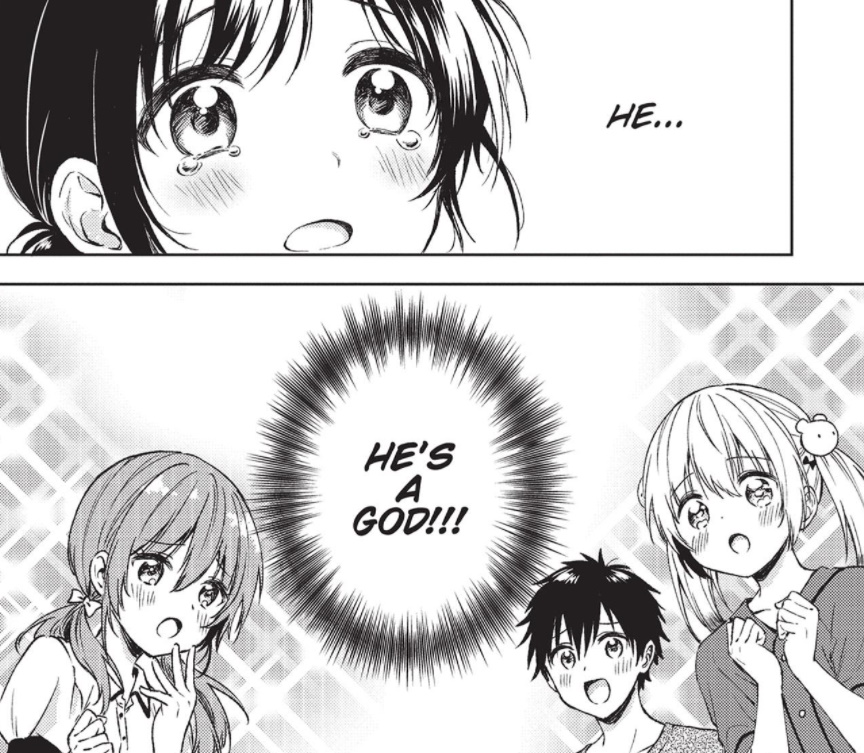
Indeed, Kotone reaches another turning point not long after this encounter, asking to sit down with the staff of Question and openly declare her sexuality to other people — and herself — for the first time in her life. When no-one is shocked or appalled at her admission — and indeed some of them are a little too excited about it — she eventually comes to the conclusion that the whole thing was actually a little anticlimactic.
It’s not always that easy for people who are coming to terms with their own identity to open up and proudly declare who they really are, of course. But the prevailing message throughout Love Me for Who I Am is that if you have a suitable support network in place, you can really start to see things from a whole new perspective — one which you might never have stumbled upon by yourself.
“Even just taking one step after another,” muses Mogumo, reflecting on the events of Love Me for Who I Am’s third volume, “the world has changed completely. It’s not a miracle. All it took was changing where we were.”
And that’s a lesson we can all learn from, whatever struggles you might be facing — sometimes you just need to change your perspective and look at the situation from somewhere else, and perhaps with some new people standing beside you.
Love Me for Who I Am volume 3 is available in paperback and Kindle format from Amazon. Alternative digital versions and physical retailers are listed on Seven Seas’ website.
Join The Discussion
Rice Digital Discord
Rice Digital Twitter
Rice Digital Facebook
Or write us a letter for the Rice Digital Friday Letters Page by clicking here!
Disclosure: Some links in this article may be affiliate links, which means we may earn a small commission if you make a purchase after clicking on them. This is at no additional cost to you and helps support Rice Digital!
- Letter from the Editor: passing the torch - June 30, 2023
- Super Woden GP 2 is looking promising - June 30, 2023
- Inti Creates is making a 32 bit-style Love Live action platformer - June 26, 2023






